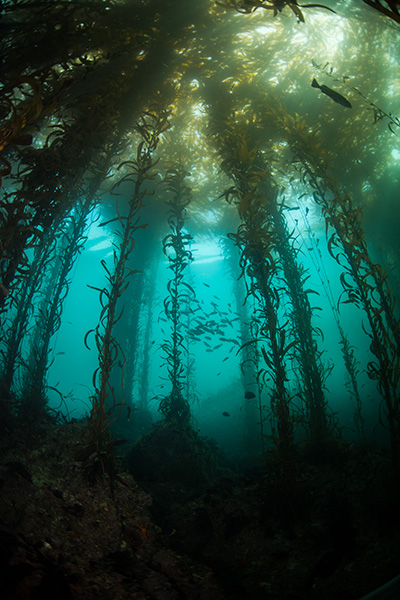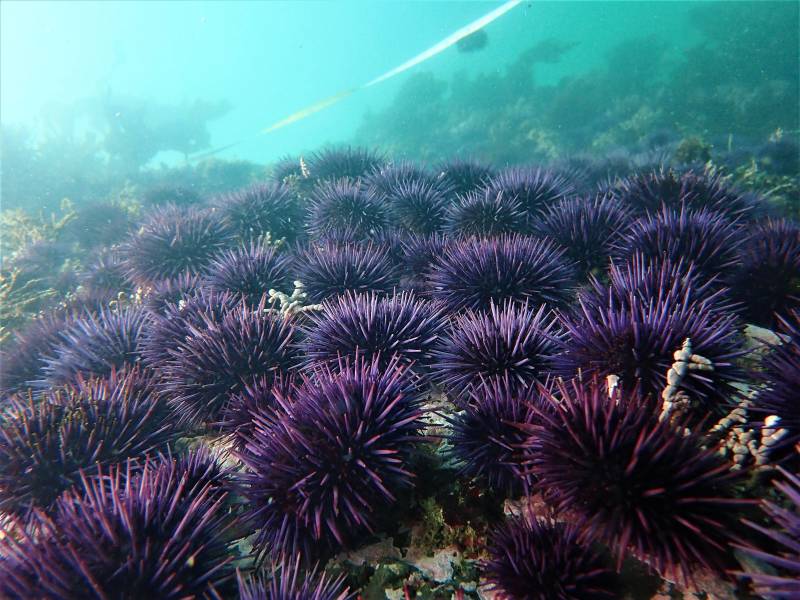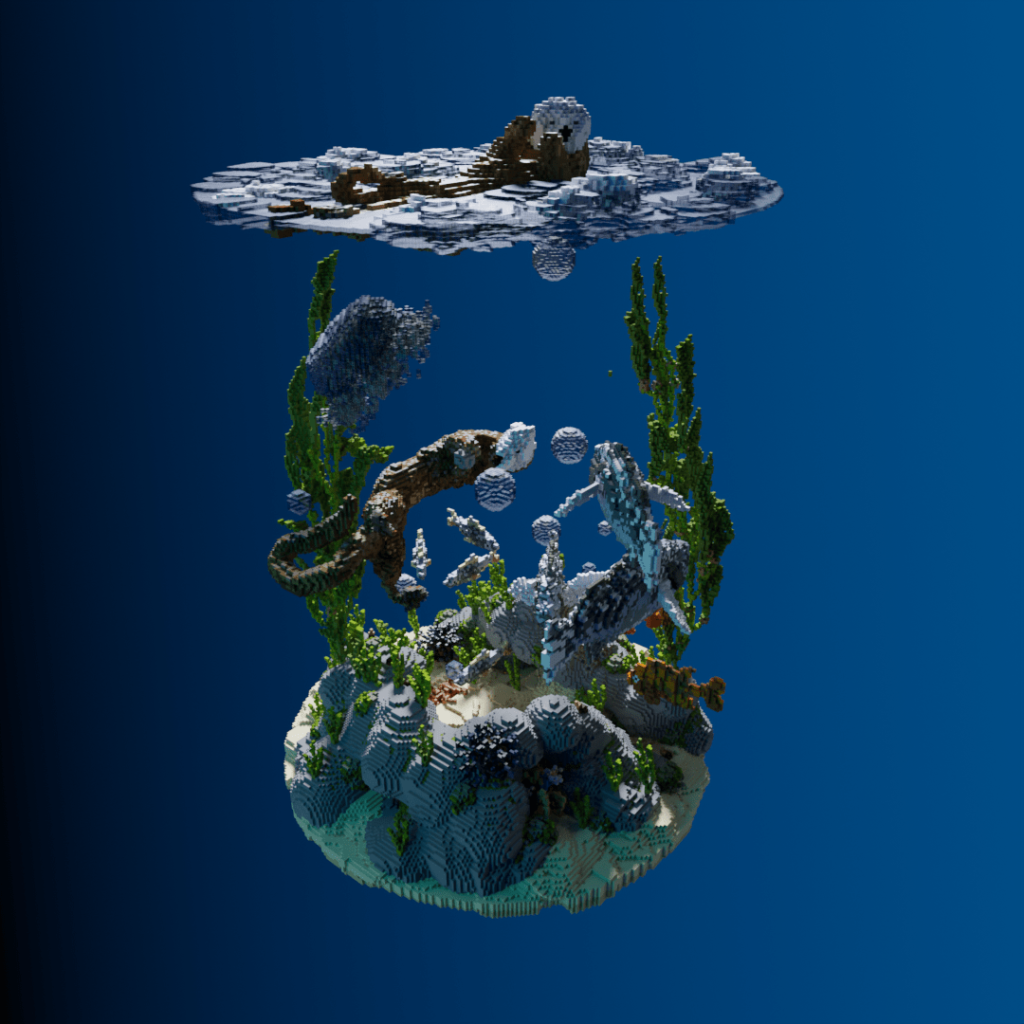Interactive 3D Model
Click on each number to see a brief description of every animal and their place in the ecosystem! Explore each animal and zoom in to see how they were recreated in Minecraft. If you have any questions, leave a comment or ask us through our contact us page!
3D Fly Through In Game
A fly through of the kelp forest build in Minecraft. While the build itself may seem far larger than the interactive model, the animals inside are built to scale!
What Are Kelp Forests?

Kelp forests can be seen along much of the west coast of North America. Kelp are large brown algae that live in cool, relatively shallow waters close to the shore. They grow in dense groupings much like a forest on land. These underwater towers of kelp provide food and shelter for thousands of fish, invertebrates, and marine mammal species.
Kelp forests harbor a greater variety and higher diversity of plants and animals than almost any other ocean community. Many organisms use the thick blades as a safe shelter for their young from predators or even rough storms.

Why Are Kelp Forests in Danger?
In kelp forests, sea urchins mostly occupy crevices in rocky reefs on the seafloor where they are protected from predators. Pieces of kelp drift down onto the reef like falling leaves in a forest, delivering food directly to the urchins in their shelters.
Kelp thrives where cold, nutrient-rich water wells up along the coast from the ocean depths, and giant kelp can grow more than a foot per day in good conditions. In 2014, however, an unprecedented marine heatwave hit the Northeast Pacific. Known as “the blob,” it spread over the West Coast from Alaska to Central California. Around the same time, a major El Niño rainstorm brought warm water up the coast from the south.
With all that warm water bathing the coast, kelp growth rates dropped dramatically. That meant less kelp detritus drifting into the crevices of the reefs, and sea urchins began to emerge in search of food. With no sea stars around to attack them, the urchins mowed down the living kelp fronds, turning kelp forests into urchin barrens.
Sea otters and Their Effect

Yet the urchin barrens remained. A close look at sea otter foraging behavior explained why. It was found that the otters were feeding on urchins in the remaining patches of kelp forest, but not in the urchin barrens.
By doing this, the sea otters are helping to maintain those patches of healthy kelp forest, which are now crucially important for the persistence of giant kelp along the coast. Spores produced from those remaining patches could eventually reseed the barren areas and restore the kelp beds.
Sea otters alone, however, won’t disrupt the urchin barrens. Some other factor is needed to clear enough urchins from the barrens to enable new kelp plants to grow there. Researchers said another predator could help knock down the urchin population, or a disease, or even a major storm bringing large, bottom-scouring waves. Some groups are even exploring human interventions, sending teams of volunteer divers out to remove sea urchins in an effort to restore the kelp forests.
